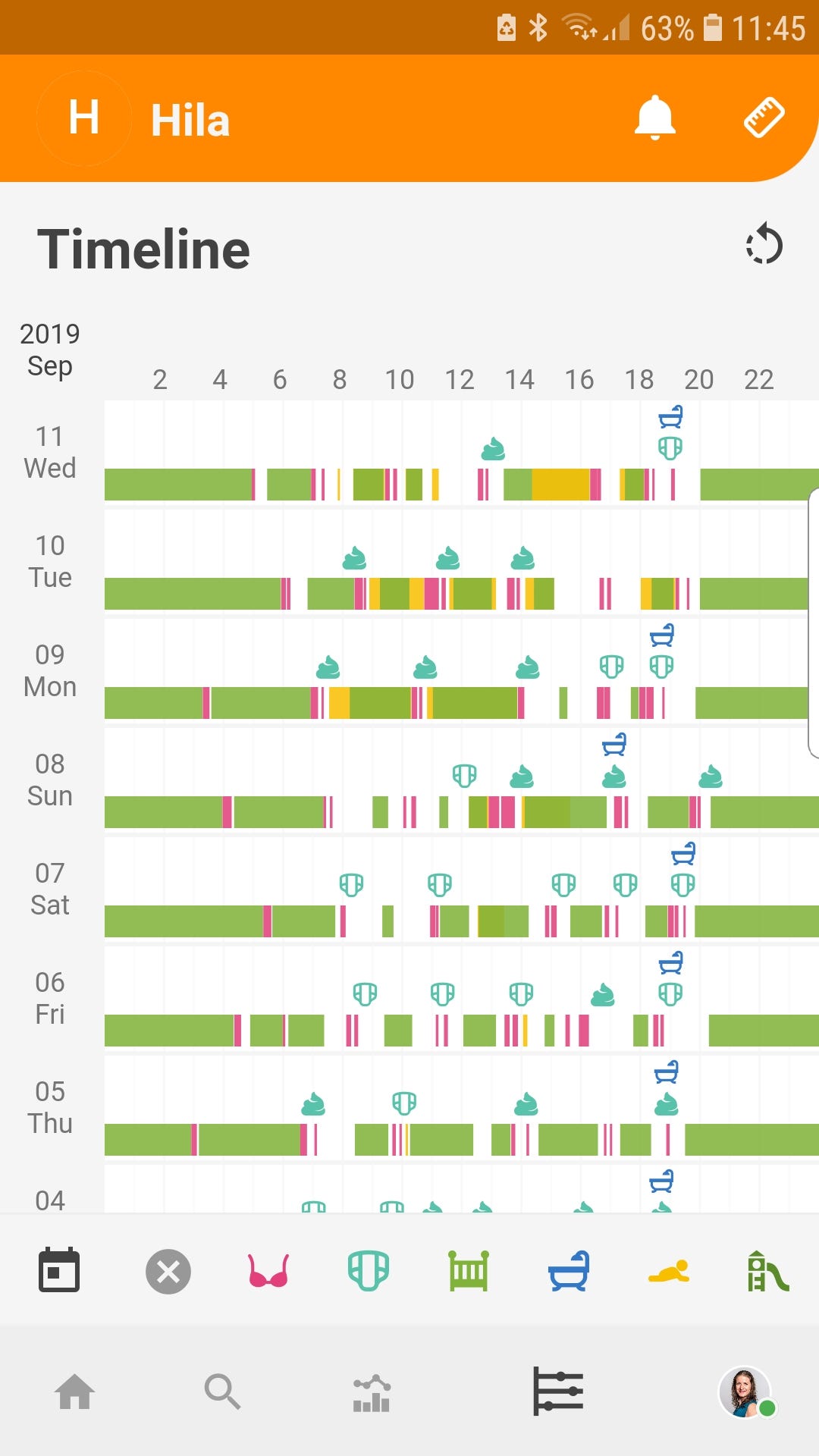When your new baby is born, your life changes forever. Even when it’s the 3rd time already, your journey with this specific baby only begins. You need to get to know each other.
And so, you start learning about your baby’s preferences and habits. Every parenting guidebook talks about the importance of a daily routine for your baby. It helps you and it helps them. The recommendation is to document — at least for a few days — your baby’s schedule and identify patterns in it to fully understand the daily routine.
With my older daughters, I did this with pen and paper. It was cumbersome, so I did it for 2–3 days, learned what I had to learn, and moved on.
But nowadays, things are different. It’s a whole new generation (pun intended), and I did what you would expect me to do as an up to date 2019 parent — I downloaded an app!

It was an amazing app, with great UX, which gave me everything I needed and more. It has, for example, a night mode where the app is relatively dark so that your baby doesn’t wake up when you document what they are doing at night (for those of you who are not yet parents — babies do things at night too. Even when they are mostly asleep).
I documented everything baby Hila was doing. I absolutely loved it. I did it for almost 3 months.
Being the data sucker that I am, I also upgraded to the paid version so that I get to see the data trends for more than 3 days. What a delight! It was worth every cent.
Using the app’s dashboard I found patterns and saw them changing as Hila was growing.
So much data to work with! I was delighted, no less.
Taking Data Too Far
One day, when Hila was crying, I took her in my arms and she didn’t stop. I tried to understand if she was hungry.
Naturally, I did what anyone would do to figure it out…
and I checked the app.
Wait, what?!
The baby is in my arms, if I only look at her I can see signs of hunger (or not), but instead of doing that, I went to check if she usually eats at this time.
That’s when I realized I went too far with data, and things had to change.
So what happened here exactly? Why did I go to the data when I could “ask the customer” directly? I mean, she was literally within an arm’s reach.
The Data Illusion
It happens because data has many advantages, and it generally serves as an amazing input to your decision-making process. As professional product leaders who want to make sure our decisions are rooted in reality, we use data all the time.
But there is one place where data is dangerous — because we think it is doing more than it actually does.
In a world of complete uncertainty, data adds elements of certainty. In fact, it does it so well, that we mistakingly think it actually creates certainty. But that’s only an illusion.
We use data to measure reality, and as a proxy for reality. but data isn’t and never will be a complete representation of reality.
For example, it can tell me how frequently Hila is eating, or when she last ate, but it can’t tell me how long she was hungry before she actually ate. And even if I decide to document hunger signs, they again are only signs and might have been misinterpreted. Or she could be both hungry and tired at this time, which changes things again.
Data is an important view of reality, but it is not the reality in itself.
Moreover, data essentially measures what already happened, and cannot measure the future. You can (and should) use it under certain assumptions about how the past helps in predicting the future. But you should be aware of the assumptions you make — since the future is not always accurately represented by the past. If you are not aware of this hidden assumption when you use data, you will miss changes as they are happening, usually until it’s too late. With young babies, by the way, changes are happening all the time.
In a world of so much uncertainty, we are striving for certainty. And it makes sense to use everything we have to create more certainty. But we must not forget that data and reality are not the same.
There Is a World Out There
For understanding things like root cause, state of mind, why things happen, what hasn’t happened yet but is about to — you cannot rely solely on data. You need to be in the real world for that.
I was tripped by the addictive nature of data despite my awareness of this phenomena, and despite the fact that “the customer” was right there in front of me.
What happens when it takes more effort? When the customer is not there, but the data is?
I urge you to take action: choose one place where you are giving up on the real world in favor of data, and change it now. Continue using data, but don’t let it be everything you use.
Go and meet your customers. Be in the world you are trying to change.
P.S. Last week I asked my newsletter subscribers what is the one skill you need to master in order to get to your next level as a product leader. Most answers were around what I expected — strategic thinking, executive communication, leadership without authority and even charisma and intuition (!) — I promise to address all of them in future posts. But it amazed me that over 20% of the answers said something about data analysis.
From my experience, most people believe they are not data-driven enough. Ironically, these are people who are actually using data (and know what they don’t know).
The reason you feel you are not data-driven enough is typically not because you really aren’t, but because your expectations from data are all wrong.
With this in mind — I invite you to read the post again.











